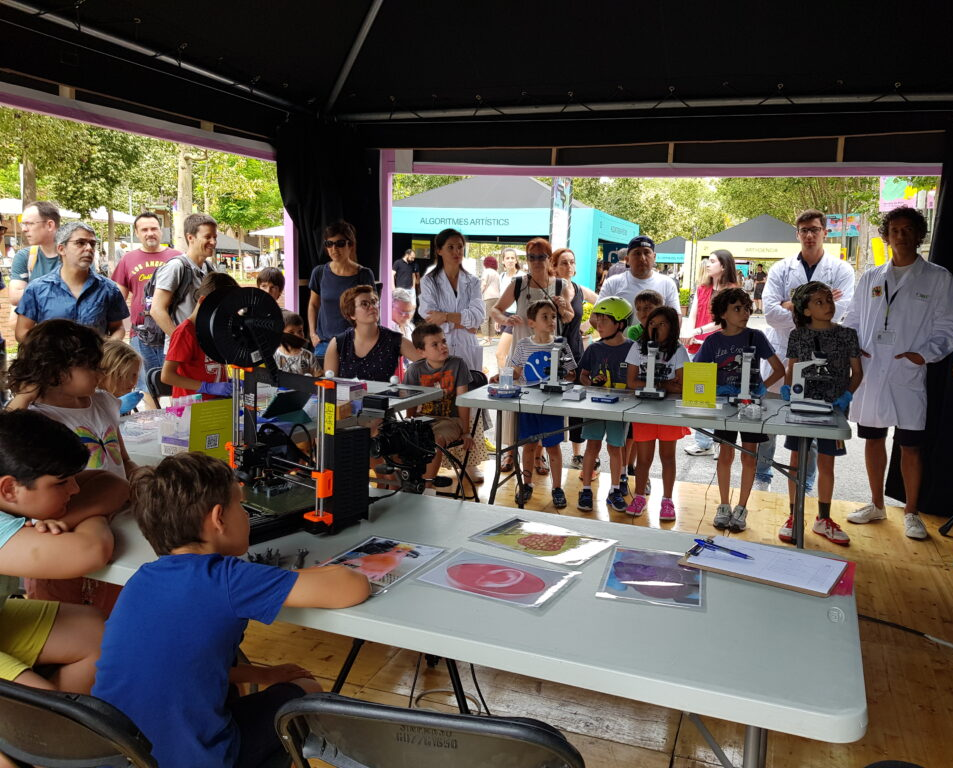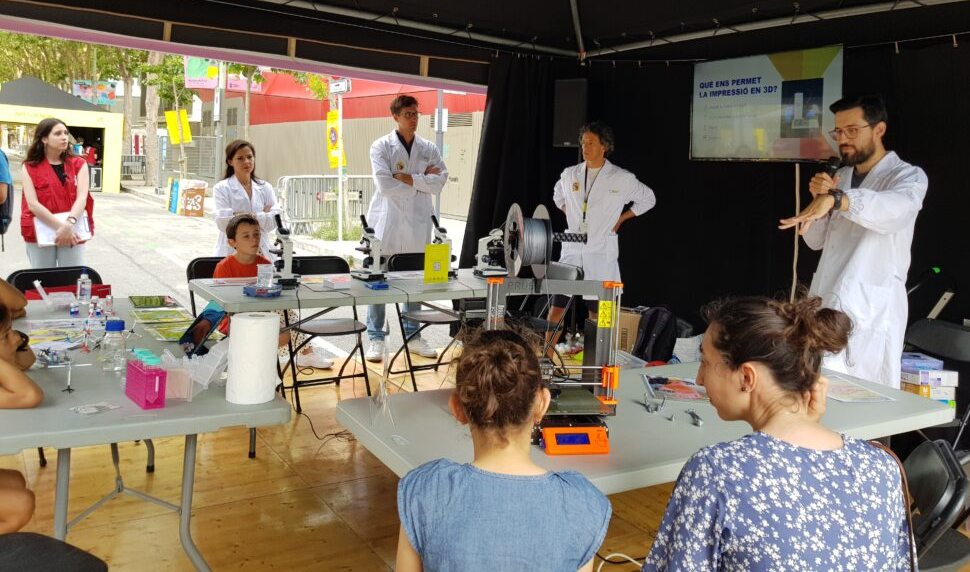The 16th Science Party (“Festa de la Ciència” in Catalan) took place last 10 – 11 of June in Barcelona. Researchers from the Institute for Bioengineering of Catalonia proposed a hands-on activity to bring B-BRIGHTER project closer to the society.

One more year, the streets of Barcelona, Spain, filled with science and people interested in it. The 16th edition of the Science Party was a great success and for two days, participants had the opportunity to engage in a diverse array of actions proposed. Shows, workshops, experiments, guided tours, microtalks, games, and debates composed a total of 177 activities that attracted approximately 16,000 visitors.
Researchers Nuria Torras, Marcel Sorribas and Angela Cirulli from the Biomimetic systems for cell engineering group at the Institute for Bioengineering of Catalonia (IBEC) in Barcelona were in charge of this outreach activity in the frame of B-BRIGHTER project, entitled “3D BIOimpression: how can bioengineering help solving health problems”.

The activity began with a brief presentation in which researchers explained what is a 3D bioprinter and how it can be employed in the field of medicine and health, such as in the fabrication of organs to transplants and to reduce animal testing by substituting animals by 3d bioprinted models. Assistants could then see, in live, how a jawbone was fabricated by a conventional 3D printer while learning from the researchers how we can print live human tissues and how works a 3D Bioprinter.
Visitors could also observe under a microscope and compare samples of real human tissues with others fabricated in the laboratory by bioimpression, such as skin and intestine. They could also wear gloves and manipulate some of the materials used in the laboratory such as Petri dishes with cell cultures, tubes with nutrient solutions for cells and pipettes.
These types of outreach activities are an excellent method for bridging the gap between science and the general public, as well as for enhancing awareness of the significance of research in our daily lives and within society as a whole.
